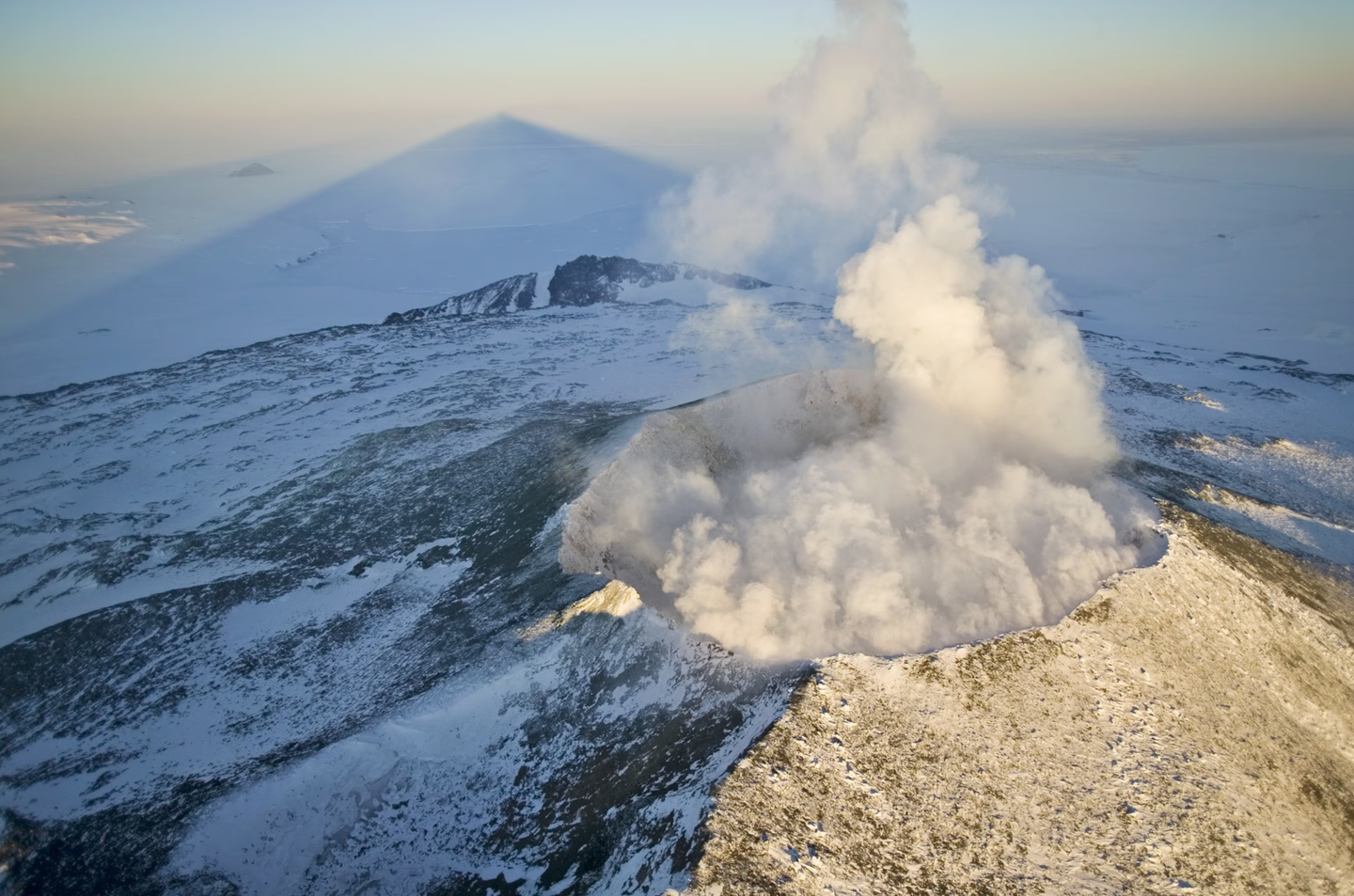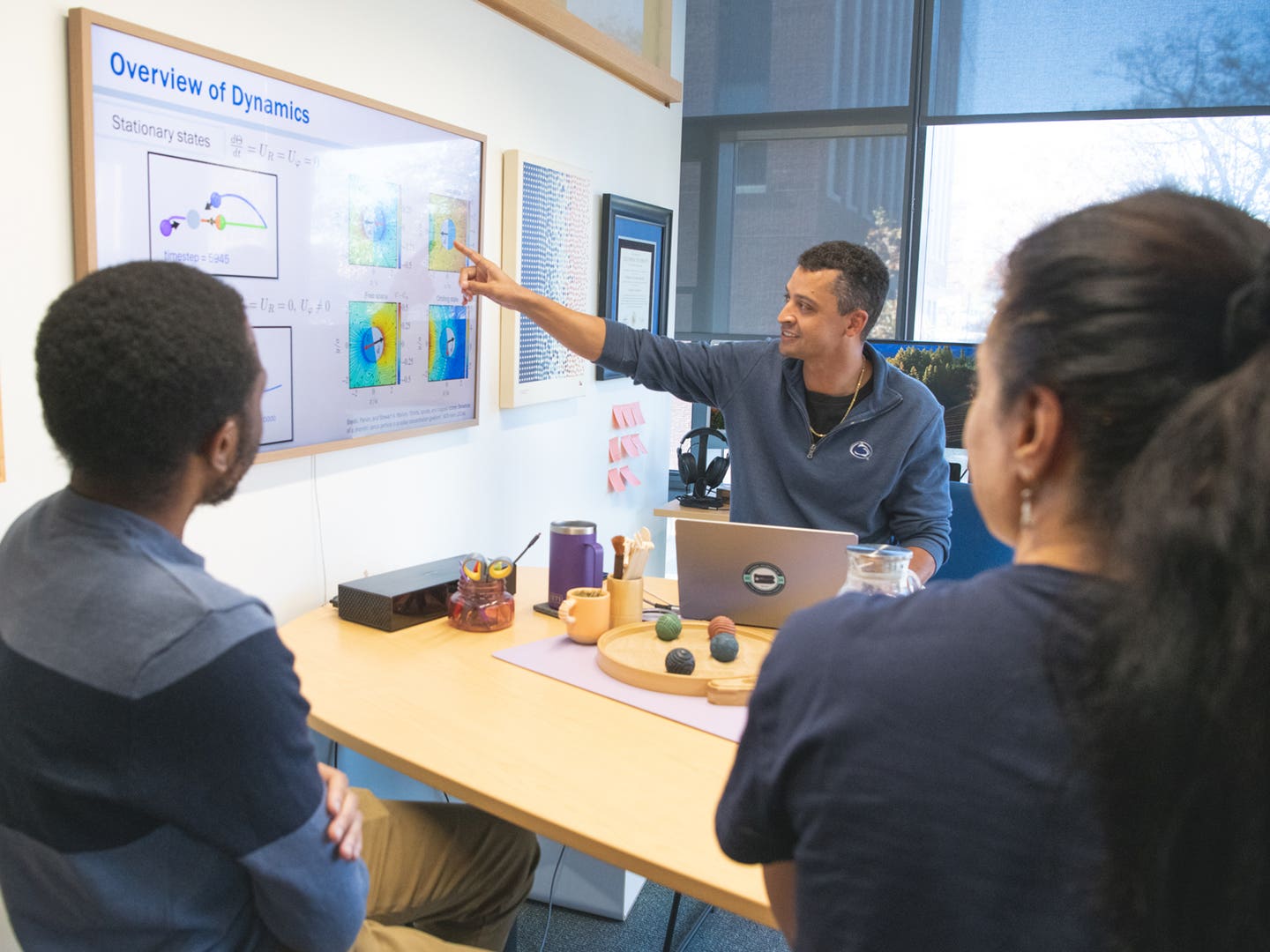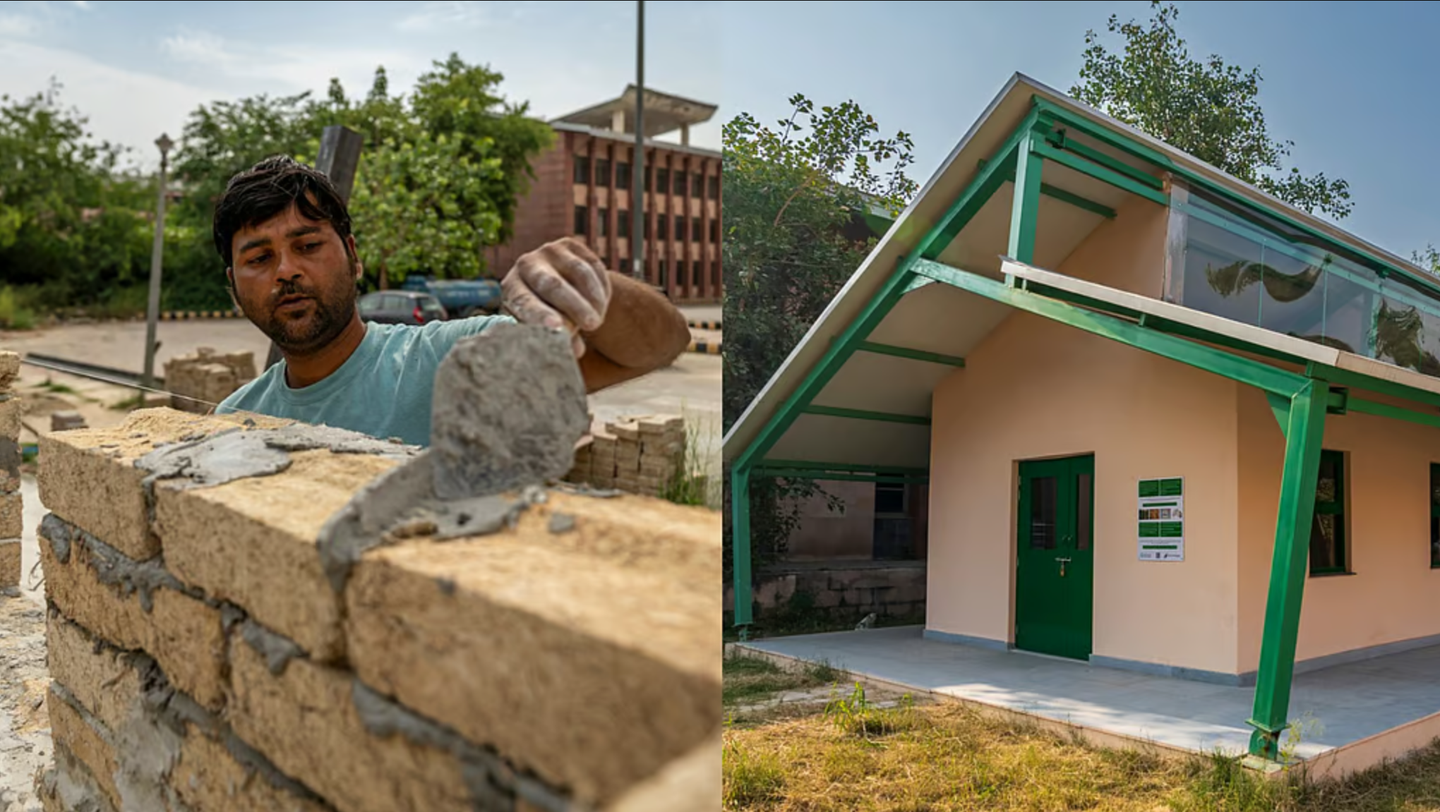Antarctica’s melting ice sheets may trigger massive volcanic activity
Melting Antarctic ice sheets may trigger volcanic eruptions, accelerating global sea-level rise through a dangerous feedback cycle.

Melting ice sheets in West Antarctica could trigger powerful volcanic eruptions, creating a dangerous feedback loop that accelerates sea-level rise. (CREDIT: George Steinmetz / CORBIS)
When volcanic eruptions make headlines, the images often depict fiery lava and towering ash clouds. But beneath Antarctica’s frozen landscape, volcanoes quietly shape Earth's climate in surprising ways. Recent scientific studies reveal that melting ice sheets in West Antarctica might trigger volcanic activity, creating a cycle that speeds up ice loss and sea-level rise.
Scientists studying Earth's geological past have found that volcanoes covered by ice sheets react strongly when the ice melts. As thick ice disappears, it removes a heavy weight from the surface. The land underneath then lifts slightly, easing pressure on magma chambers hidden deep within the Earth. This process, called isostatic rebound, can push magma upward, causing eruptions that further melt the ice above.
Ice Sheets, Volcanoes, and Climate
West Antarctica, home to one of Earth's largest ice sheets, sits atop a volcanic hotspot known as the West Antarctic Rift. This region contains over 100 volcanic centers—many hidden beneath ice layers thousands of meters thick. The ice not only hides these volcanoes but also stabilizes them. Its massive weight holds magma chambers under control, preventing frequent eruptions. But when climate change thins the ice, this balance is disrupted.
Researchers recently used computer simulations to study how shrinking ice sheets impact these hidden volcanic systems. They discovered that the rate at which ice disappears greatly affects volcanic behavior.
Faster melting reduces pressure quickly, allowing magma chambers to expand and push magma upward. This increased volcanic activity melts even more ice, creating a dangerous feedback loop that could speed up global sea-level rise.
Dr. Allie Coonin, a researcher at Brown University who led the study, explains the process clearly: "As the ice melts away, the reduced weight on the volcano allows the magma to expand. It applies pressure upon the surrounding rock that may facilitate eruptions."
The consequences of this interaction are significant. When magma chambers deep beneath ice sheets expand, dissolved gases—mostly carbon dioxide and water—begin forming bubbles. These bubbles increase pressure within the magma, making eruptions more likely and potentially more intense. In essence, the melting ice sheet opens the door for explosive volcanic activity.
Related Stories
Lessons from the Andes
To understand how glaciers influence volcanoes, researchers also looked at volcanic records from the Andes mountains in South America. Around 18,000 years ago, large ice sheets covered volcanoes in Patagonia. As Earth's climate warmed naturally, ice sheets melted rapidly, triggering a series of volcanic eruptions. The timing of these eruptions strongly matches periods when ice was retreating fastest.
This historic pattern confirms the researchers' models: melting glaciers can directly lead to increased volcanic eruptions. According to Coonin, volcanic systems react quickly once pressure is reduced. "We found that the removal of an ice sheet results in larger eruptions," she says. These bigger eruptions release more heat, accelerating ice melt even further.
Today, Antarctica is experiencing conditions similar to Patagonia’s past. Satellite measurements show ice thinning rates up to 3 meters per year in certain West Antarctic areas, a rate scientists consider alarmingly fast. If current melting continues—or accelerates—it could trigger substantial volcanic activity beneath the ice.
Underestimated Risks Beneath Antarctic Ice
Despite its critical role, volcanic activity beneath Antarctica’s ice has often been overlooked when calculating sea-level rise projections. Current models usually consider ocean warming and atmospheric carbon dioxide levels, ignoring volcanic risks hidden under the ice.
The West Antarctic Ice Sheet poses a unique threat because most of it sits below sea level. As ocean waters rise due to melting ice, more of this ice sheet becomes submerged. Submersion destabilizes the ice, causing it to retreat faster. Since volcanic activity could speed this process significantly, accurate predictions must include volcanic factors.
"This highlights the need for physics-based modeling of magma chambers," says Coonin. "We must understand exactly how retreating ice affects volcanic systems if we're going to accurately predict future sea-level changes."
Geophysical evidence also supports the researchers’ concerns. Radar surveys reveal intact volcanic cones beneath Antarctica’s ice. These cones suggest recent volcanic activity; otherwise, the ice’s constant motion would have eroded them. Elevated heat flow measurements and seismic activity confirm that these hidden volcanoes remain active.
Complex Interactions Shape Earth's Future
Volcano-ice interactions involve complex physical processes, including changes in crustal stress and melting deep within Earth’s mantle. As ice melts, it reduces pressure deep underground, allowing rocks to melt more easily. This process, called decompression melting, increases the amount of magma rising toward the surface. Historical examples from Iceland provide additional support: volcanic eruptions there spiked dramatically after glaciers retreated around 12,000 years ago.
In West Antarctica, these interactions could create dangerous conditions. The volcanoes' response depends heavily on the speed of ice melt. Researchers modeled scenarios ranging from slow, gradual ice loss to extremely rapid melting. They found that faster melting led directly to increased volcanic activity. Magma chambers responded by growing larger, releasing gases sooner, and erupting more powerfully.
In practical terms, even minor changes in ice thickness significantly impact volcanic stability. For instance, the largest magma chambers tested showed dramatic increases in volcanic activity when ice melted at rates seen today. These eruptions could further speed up ice loss, causing a chain reaction that accelerates sea-level rise.
The Long-Term Challenge
One troubling finding from the research is that volcanic activity triggered by melting ice sheets could persist for centuries, even if humans stopped emitting greenhouse gases today. Earth’s volcanic systems respond slowly but powerfully to environmental changes. Once magma chambers become unstable, they could continue erupting periodically for thousands of years, continually melting ice.
Moreover, rising carbon dioxide levels intensify this feedback loop. Carbon dioxide emissions warm Earth's atmosphere, causing ice sheets to melt faster. This exposes darker surfaces beneath ice, which absorb more sunlight, warming the planet further. Combined with volcanic eruptions triggered by melting ice, these processes could rapidly destabilize Antarctica’s ice.
The research warns that scientists must consider volcanic factors carefully when estimating future sea-level rise. Understanding how rapidly volcanoes respond to melting ice is crucial for accurate climate projections. "Even if anthropogenic warming ceased immediately, volcanic activity would continue affecting ice sheets," explains Coonin. This finding underscores the urgent need to include volcanoes in climate models.
Ultimately, this research broadens our understanding of Earth’s interconnected systems. It reveals hidden threats beneath Antarctica’s icy landscape, highlighting the critical importance of predicting these interactions accurately.
To protect future generations from climate change, researchers must continue unraveling how ice, volcanoes, and climate interact beneath Antarctica’s icy crust.
The research findings are available in the journal Geochemistry, Geophysics, Geosystems.
Note: The article above provided above by The Brighter Side of News.
Like these kind of feel good stories? Get The Brighter Side of News' newsletter.
Joseph Shavit
Head Science News Writer | Communicating Innovation & Discovery
Based in Los Angeles, Joseph Shavit is an accomplished science journalist, head science news writer and co-founder at The Brighter Side of News, where he translates cutting-edge discoveries into compelling stories for a broad audience. With a strong background spanning science, business, product management, media leadership, and entrepreneurship, Joseph brings a unique perspective to science communication. His expertise allows him to uncover the intersection of technological advancements and market potential, shedding light on how groundbreaking research evolves into transformative products and industries.



